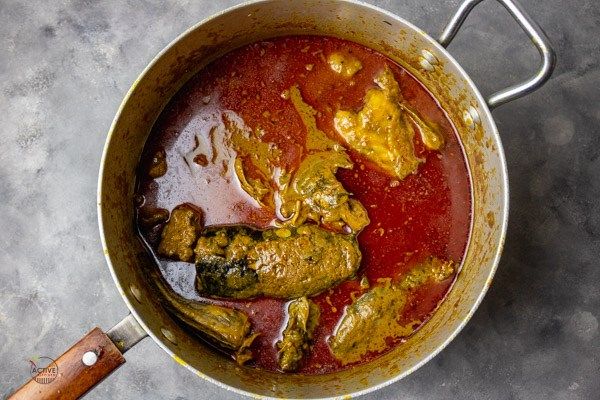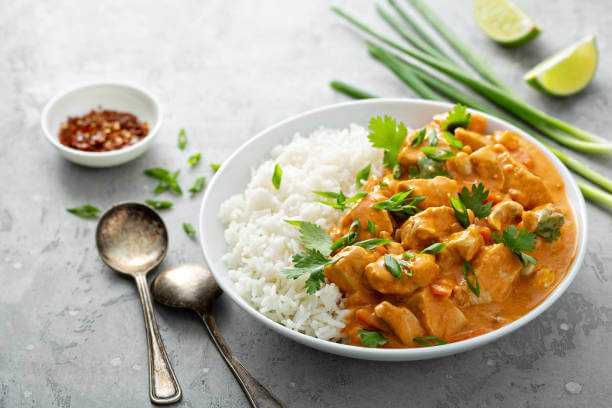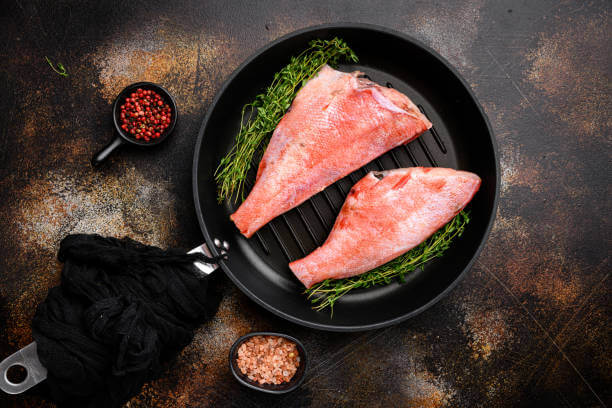
In the heart of West Africa, the tantalizing aroma of Banga Soup wafts through kitchens, signaling a feast of flavors and traditions. Uncover the art of crafting this beloved Nigerian delicacy as we embark on a culinary journey to learn how to make Banga Soup. From the vibrant red palm fruit base to the rich blend of spices, this article is your guide to mastering the art of this hearty, soul-warming dish. Get ready to discover the secrets and steps that bring this iconic West African soup to life, one aromatic spoonful at a time.
What is Banga?
Banga, also known as “Ofe Akwu” in some Nigerian regions, is a flavorful and aromatic soup that hails from the Niger Delta region of Nigeria. At its core, banga is a soup prepared with a rich palm fruit base. The palm fruit extract is the key ingredient that gives the soup its distinctive color, flavor, and texture.
What Does Banga Soup Taste Like?
The primary flavor of banga soup comes from the palm fruit extract, which imparts a mild, nutty, and slightly sweet taste to the soup. The palm fruit contributes a creamy texture and a subtle fruity undertone.
Ingredients like onions and aromatic vegetables like scent leaves (basil) or uziza leaves bring a fresh, herbaceous note to the soup.
Ingredients For Banga Soup
Here is a list of ingredients you can use for Banga Soup and possible alternatives:
- Palm Fruit: The primary ingredient is palm fruit extract, which can be obtained from freshly harvested palm fruits or palm fruit concentrate. It is the base of the soup and gives it its characteristic color and flavor.
- Meat: Common choices for meat include goat, beef, or any other preferred meat.
- Fish: Catfish or tilapia are often used, and you can use fresh or smoked fish for added flavor.
- Seafood: Some variations of banga soup may include seafood like crayfish or shrimp.
- Periwinkle: Periwinkle, a type of small edible sea snail, is a traditional addition in some recipes.
- Ground Crayfish: Ground crayfish is a staple in banga soup, adding a distinctive flavor.
- Pepper: Fresh or ground chilies or hot pepper are used to add heat to the soup.
- Onions: Chopped onions are often sautéed to add flavor.
- Ginger and Garlic: These are commonly used for additional depth of flavor.
- Banga Spices: Regional variations may include specific local spices and herbs for added flavor, such as uziza leaves, scent leaves (basil), and ogiri (fermented locust bean condiment).
- Scent Leaves (Basil): Fresh or dried scent leaves, also known as basil, are added for an aromatic and herbaceous touch.
- Uziza Leaves: Uziza leaves are known for their slightly peppery flavor and are used to enhance the soup’s taste.
- Okra: Some recipes include okra to thicken the soup.
How To Prepare Banga Soup

Whether you’re a seasoned cook or a culinary enthusiast seeking a flavorful challenge, our step-by-step guide will take you on a journey to master how to properly prepare Banga Soup.
Ingredients
- Palm fruit extract (from freshly harvested palm fruits or concentrate)
- Meat (e.g., goat, beef)
- Fish (e.g., catfish or tilapia)
- Ground crayfish
- Fresh or ground chilies (pepper)
- Onions
- Ginger and garlic
- Scent leaves (basil)
- Uziza leaves (optional)
- Palm oil (for additional flavor)
- Stock cubes (seasoning cubes)
- Salt to taste
Instructions
If using fresh palm fruits, extract the palm fruit pulp by boiling the fruits in water until they soften, then pound or blend the fruits to obtain the extract. Strain the extract through a sieve to remove any residue.
If using palm fruit concentrate, dilute it with water according to the product instructions to create a palm fruit extract.
In a separate pot, cook the meat and fish with onions, ginger, garlic, and seasoning cubes until they are tender. You can use a pressure cooker to speed up the process.
Blend the crayfish, ground pepper, and a portion of the scent leaves into a smooth paste.
In a larger cooking pot, mix the palm fruit extract with water to achieve your desired consistency. The soup should be neither too thick nor too thin.
Add the meat and fish to the palm fruit extract.
Stir in the blended spices and palm oil. The palm oil adds flavor and a vibrant red color to the soup.
Simmer the mixture, allowing the flavors to meld. Taste and adjust the seasoning as needed with salt and more ground pepper if you desire extra heat.
Add the remaining scent leaves and uziza leaves (if using) to the soup. These herbs contribute to the soup’s aroma and flavor.
Allow the soup to simmer for a few more minutes to ensure the flavors meld properly.
What To Serve With Banga Soup
Starch (Usi or Usi Ebu): This is a traditional accompaniment for banga soup in some regions. Starch is similar to a starchy pudding or dumpling and is made from cassava or yam flour. It has a smooth and slightly stretchy texture that pairs well with the soup.
Garri: Garri is another popular choice. It is made from fermented cassava granules and can be served in two main forms: “dry” (lightly toasted) or “soaked” (mixed with water to form a soft, grainy texture). Garri provides a great contrast to the soup’s flavors and is a staple accompaniment.
Fufu: Fufu is a general term for various West African starchy side dishes made from ingredients like cassava, yam, plantains, or cocoyam. Fufu is often served as a soft, dough-like dumpling that is used to scoop up the soup.
Rice: In some regions, banga soup is served with plain boiled rice. The rice acts as a neutral base for the flavorful soup.
Eba: Eba, also known as “gari jollof,” is made from garri and is a popular choice. It is served in a dough-like form and is used to scoop up the soup.
Pounded Yam: Pounded yam is another option, created by pounding boiled yam until it reaches a smooth and stretchy consistency. It can be served in small, dough-like portions.
Where To Buy Palmnut Extract For Banga Soup
African grocery stores or markets, particularly those serving West African communities, often sell palm nut extract. Here at our African Food Store we sell palm nut extract for you to make tasty Banga Soup.
Conclusion
As we conclude our journey into the art of making this beloved soup, we hope you’ve uncovered the secrets and techniques to bring this culinary masterpiece to life in your own kitchen. The tantalizing aroma, the rich red hue, and the complex blend of flavors represent more than just a meal; they embody the essence of a region’s history and a people’s pride.






Leave a comment